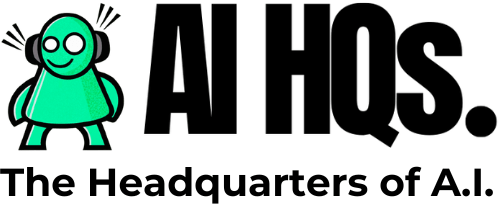Risks AI Outpaces Evaluation Methods Industry Struggles
Artificial Intelligence (AI) is rapidly evolving, pushing the boundaries of traditional evaluation methods to their breaking points. The exponential growth in AI capabilities, fueled by massive investments from tech giants and venture capitalists, has rendered many older assessment metrics obsolete. As new AI models flood the market, flaws in existing evaluation criteria are becoming glaringly apparent, posing challenges for businesses, public bodies, and regulators alike.\n\nThe release of OpenAI’s ChatGPT in 2022 marked a significant milestone in the AI landscape, triggering an unprecedented technology race. Companies like Google, Microsoft, and Amazon, among others, have poured billions into AI research and development, leading to a flurry of new AI models vying for the top spot in public rankings. However, the rapid advancement of AI has outpaced the effectiveness of traditional evaluation benchmarks.\n\nAidan Gomez, CEO of AI startup Cohere, emphasises the transient nature of public benchmarks, which quickly become outdated as models evolve and adapt. The traditional approach to evaluating AI performance, accuracy, and safety is proving inadequate for the complexity of modern AI systems. As AI continues to improve, it effortlessly surpasses existing benchmarks, rendering them obsolete in a matter of months rather than years.\n\nThe shift in focus from academia to the boardroom reflects the growing importance of AI in strategic decision-making. Chief executives now view generative AI as a top investment priority, recognising its potential to drive innovation and transformation across various industries. However, alongside the promise of AI come significant risks and challenges that must be addressed.\n\nShelley McKinley, Chief Legal Officer at GitHub, underscores the importance of trust in AI technologies. Companies must prioritise building trustworthy products to foster user confidence and mitigate potential risks. Governments are also grappling with the complexities of AI deployment and regulation, as evidenced by bilateral agreements and initiatives aimed at addressing AI safety concerns.\n\nThe challenge of evaluating large language models (LLMs), such as ChatGPT, has prompted the development of new assessment frameworks. Initiatives like the Holistic Evaluation of Language Models and the Massive Multitask Language Understanding benchmark aim to test AI systems on various criteria, including reasoning, memorization, and susceptibility to disinformation. However, these evaluations struggle to keep pace with the sophistication of modern AI models, which excel at performing complex tasks over extended horizons.\n\nMike Volpi, a partner at Index Ventures, compares evaluating AI models to assessing human intelligence—an inherently challenging task. The opacity of AI algorithms and the lack of understanding regarding their inner workings further complicate evaluation efforts. Moreover, concerns about data contamination and model bias raise questions about the reliability of existing evaluation methods.\n\nIn response to these challenges, organisations are exploring alternative approaches to AI evaluation. Platforms like Hugging Face offer customizable tests that allow users to assess AI models based on specific criteria tailored to their needs. Additionally, businesses are increasingly relying on internal test sets and human evaluation to gauge AI performance accurately.\n\nWhile metrics and benchmarks provide valuable insights into AI capabilities, they only tell part of the story. The decision to adopt an AI model requires careful consideration of various factors, including cost, functionality, and ethical implications. Ultimately, the effectiveness of an AI solution hinges on real-world performance and user feedback, rather than standardised assessments.\n\nThe rapid pace of AI development calls for a proactive approach to risk management and regulation. Chief Risk Officers (CROs) from major corporations and international organisations highlight the reputational risks associated with AI and emphasise the need for enhanced regulatory oversight. However, achieving consensus on regulatory frameworks and ethical guidelines remains a formidable challenge.\n\nPeter Giger, Group Chief Risk Officer at Zurich Insurance Group, advocates for a long-term perspective on AI risk management. While the immediate impacts of AI may not be readily apparent, ignoring the long-term implications would be a grave mistake. As AI continues to reshape industries and societies, stakeholders must collaborate to ensure responsible development and deployment of AI technologies.\n\nAs we navigate the complex terrain of AI development and adoption, it’s essential to recognise the multifaceted nature of the challenges ahead. Beyond technical considerations, AI raises profound ethical, societal, and regulatory questions that demand thoughtful engagement and collaboration across stakeholders.\n\nEthical concerns surrounding AI encompass issues such as bias, fairness, and accountability. AI algorithms are only as unbiased as the data they are trained on, making it imperative to address issues of dataset diversity and representativeness. Furthermore, AI-driven decision-making can have far-reaching consequences for individuals and communities, highlighting the need for transparency and accountability in algorithmic systems.\n\nSocietal implications of AI extend to issues of employment, privacy, and inequality. Automation driven by AI has the potential to reshape the labour market, displacing certain jobs while creating new opportunities. Privacy concerns arise from the vast amounts of data collected and analysed by AI systems, raising questions about data ownership, consent, and surveillance. Additionally, AI has the potential to exacerbate existing inequalities if not deployed equitably and inclusively.\n\nRegulatory frameworks play a crucial role in ensuring the responsible development and deployment of AI technologies. However, crafting effective regulations requires a nuanced understanding of AI’s capabilities and limitations, as well as its potential impact on society. Balancing innovation with risk mitigation is a delicate task that requires ongoing dialogue and collaboration between policymakers, industry leaders, and civil society.\n\nAs we grapple with these complex issues, it’s clear that there are no easy solutions or quick fixes. Addressing the challenges of AI requires a multifaceted approach that integrates technical expertise with ethical considerations, societal values, and regulatory oversight. By fostering a culture of responsible innovation and collaboration, we can harness the transformative potential of AI while safeguarding against its risks.\n\nIn conclusion, the increasing power of AI presents both opportunities and challenges for businesses, governments, and society as a whole. As AI systems become more sophisticated, traditional evaluation methods must evolve to keep pace with the changing landscape. By fostering trust, embracing transparency, and prioritising ethical considerations, we can harness the full potential of AI while mitigating its risks.\n\nfor all my daily news and tips on AI, Emerging technologies at the intersection of humans, just sign up for my FREE newsletter at www.robotpigeon.be







